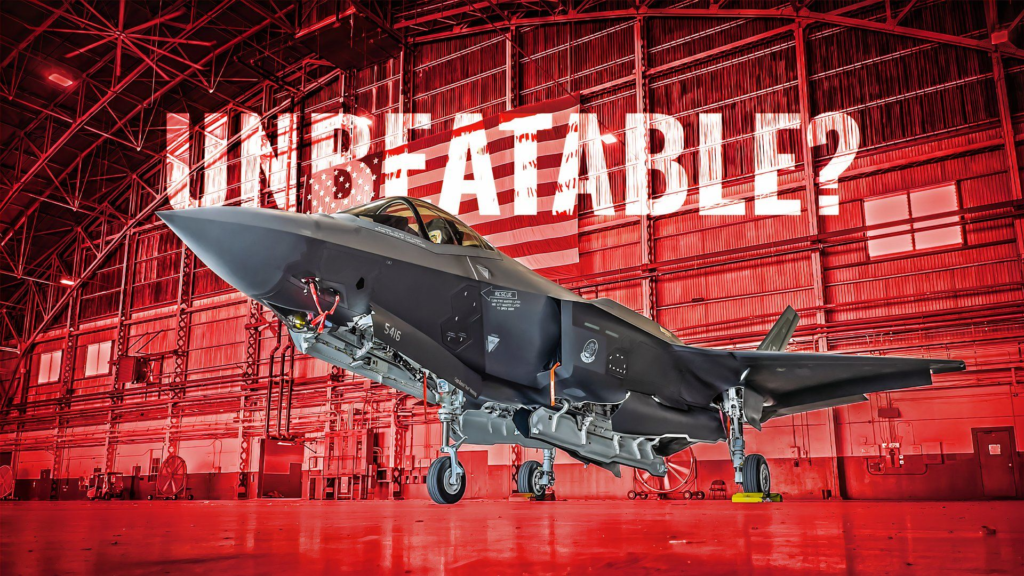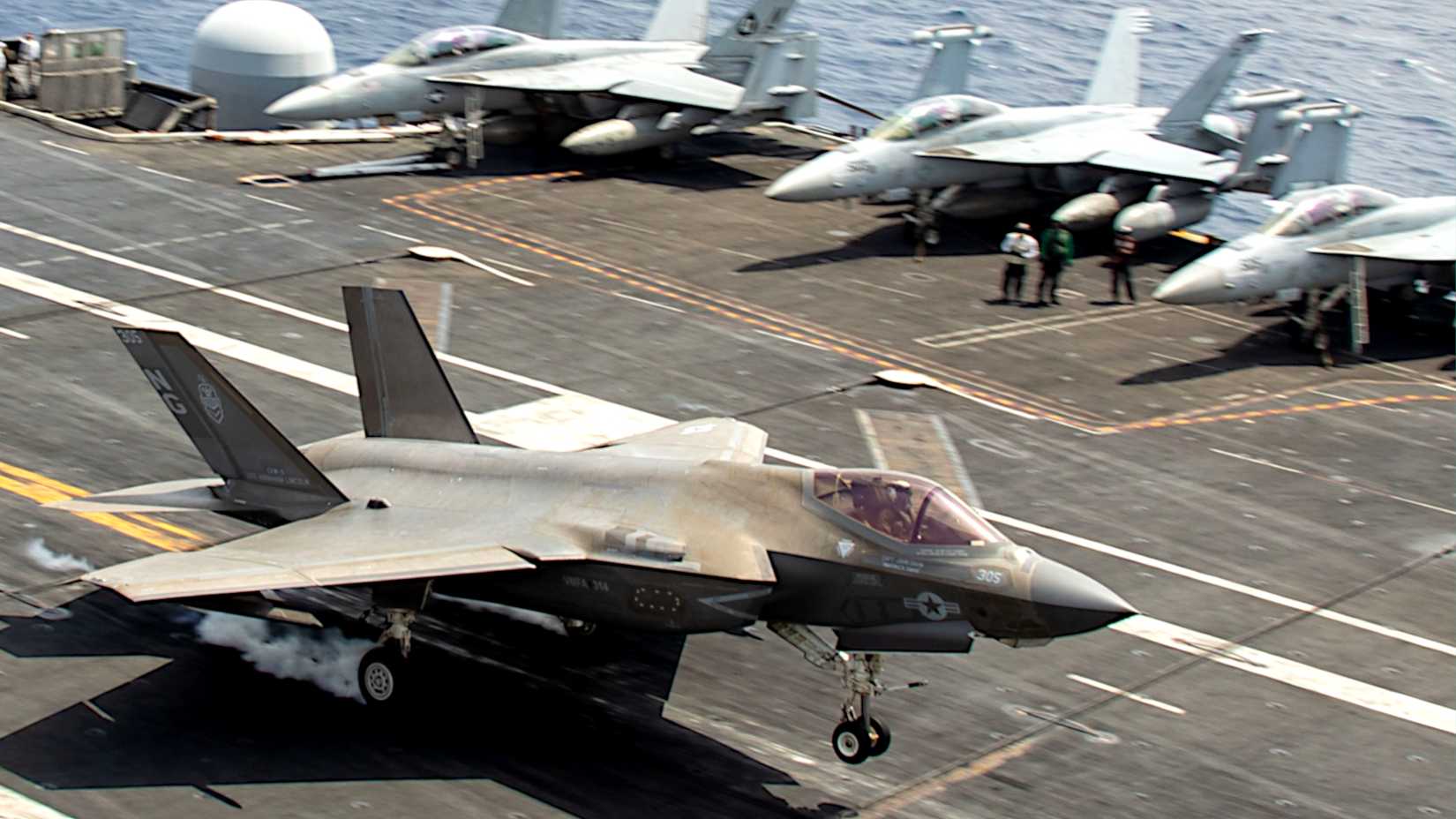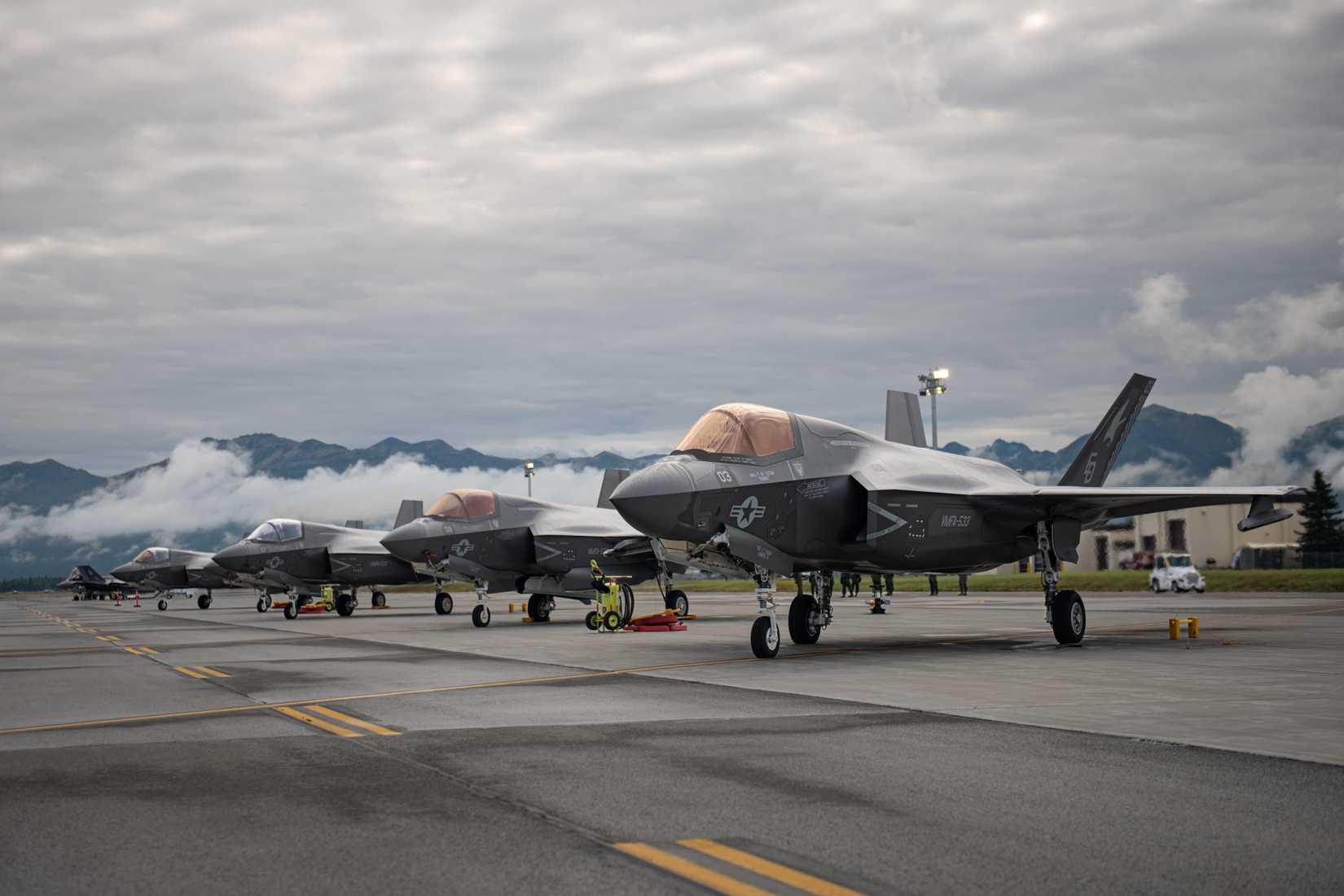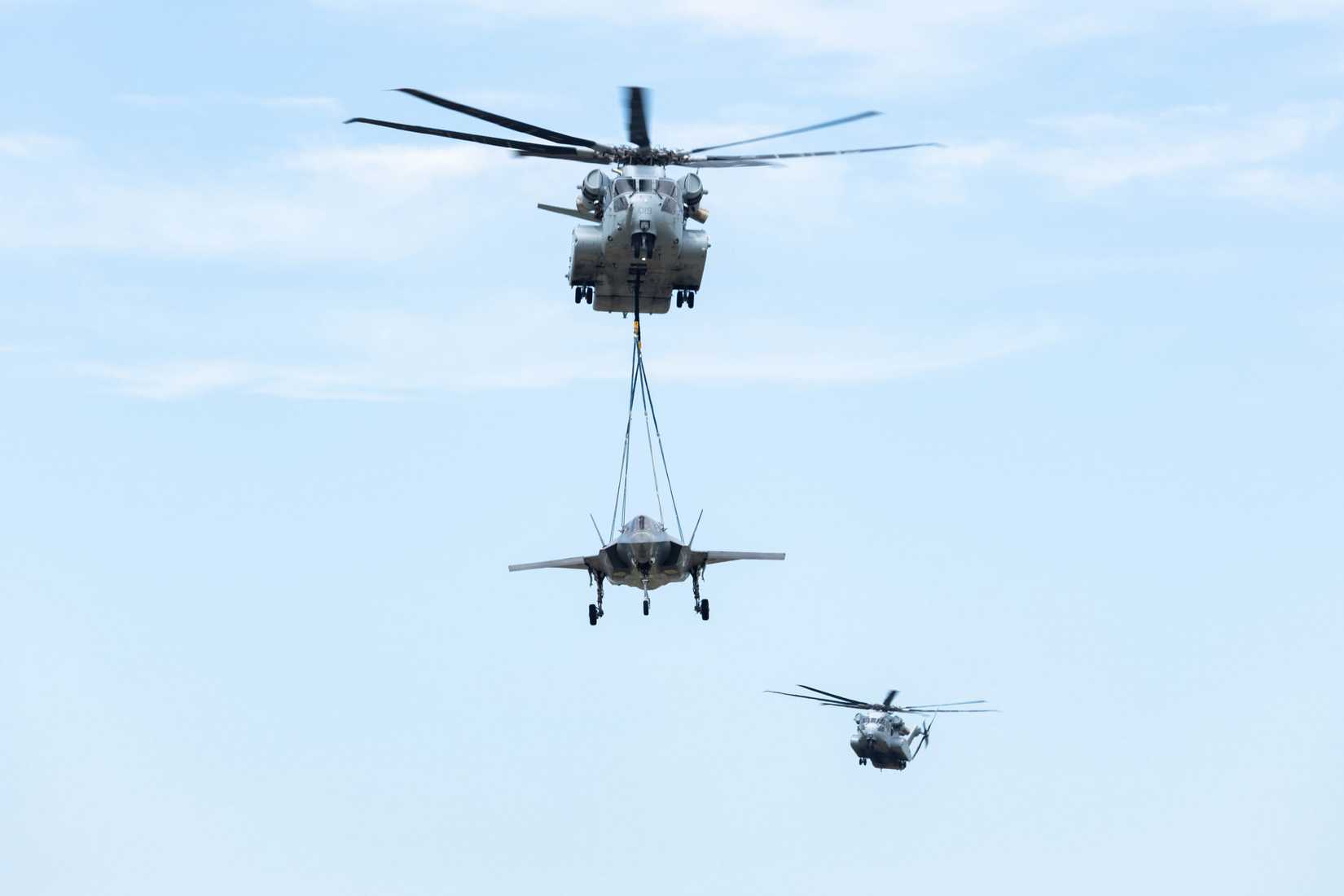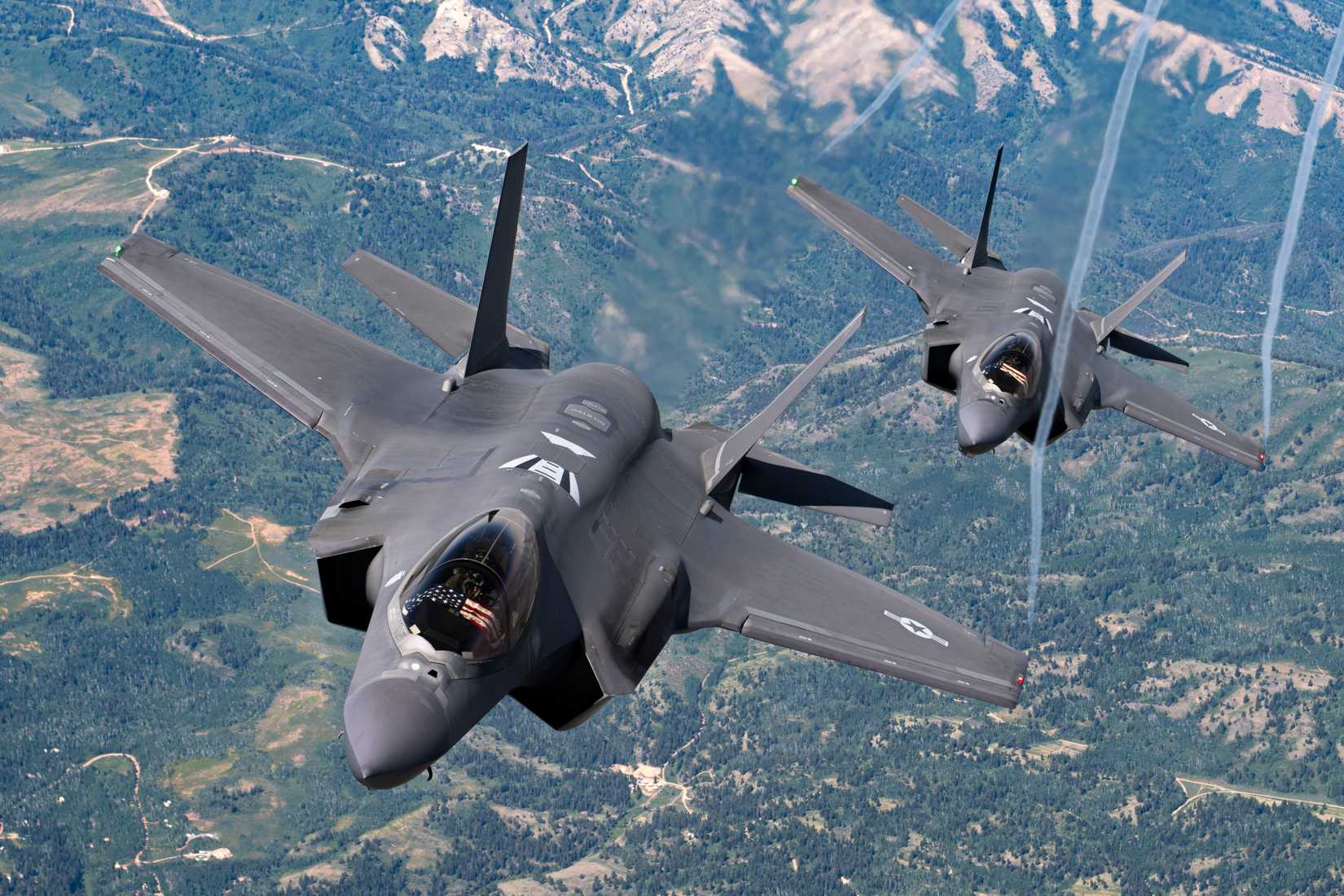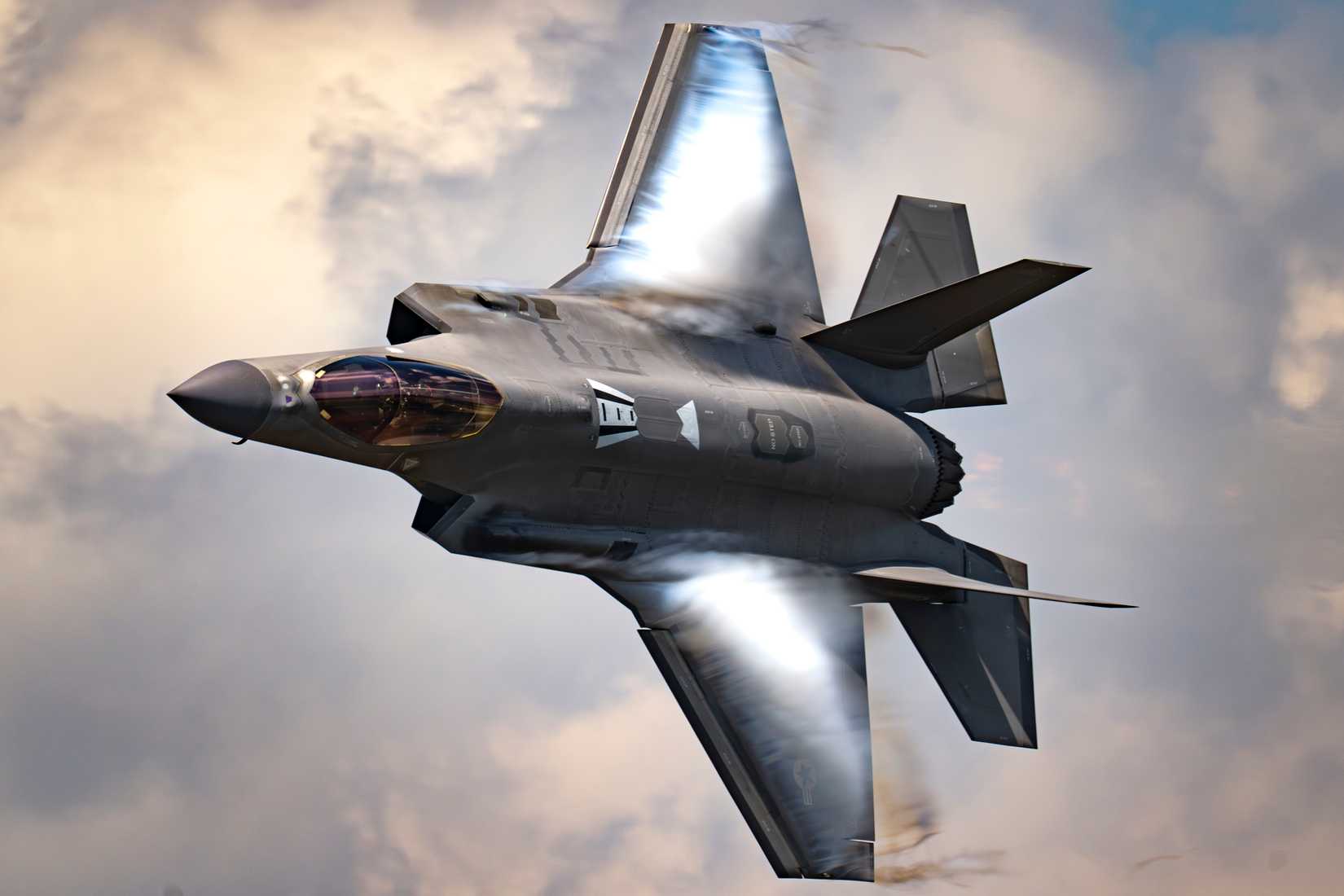In the shifting balance of air power and rapidly evolving threats, few aircraft carry as much weight, both symbolic and practical, as the F-35. For the US Air Force, the Lightning II isn’t an ordinary fighter jet: it represents the backbone of future combat capability, thanks to its incredible multirole capabilities. In our guide, we’ll explore why the F-35 plays such a pivotal role, how it compares to legacy forces, and what challenges lie ahead.
To understand the F-35’s central importance, we will study its design, operational roles, strategic value, and its place in a complex defense ecosystem. We will also examine real performance metrics, readiness concerns, and the Air Force’s goals for the coming decades.
The Fifth-Generation Edge: Stealth, Sensors, And Fusion
The F-35 is built around a core philosophy that distinguishes it from earlier fighters: it is not only about speed and weapons, but also about being invisible (or hard to detect), being intimately aware of the battlespace, and seamlessly fusing data.
At its heart, the F-35A, the Air Force’s primary variant with a conventional takeoff and landing scheme, is a multirole stealth fighter capable of performing 9g maneuvers, integrating advanced avionics, and operating in contested airspace, as described by the USAF. Its stealth design, with aligned edges, radar-absorbent coatings, and internal weapons bays, helps reduce its radar and infrared signatures.
That stealth alone gives it an edge: the ability to approach or penetrate defended airspace that legacy 4th-generation jets would find extremely risky. According to Lockheed Martin, the F-35’s real power lies in sensor fusion: its onboard systems (radar, electro-optical/infrared targeting, distributed aperture arrays) and data links allow it to collect, fuse, and share information in real time. This “seeing all around” capability means a pilot can have better situational awareness than ever before.
For the USAF and other allied forces, an F-35 is like a Swiss Army knife. Apart from being a very successful multirole aircraft, including VTOL variants, it acts as a high-speed, stealthy node in a joint, networked battle, extending the reach of other aircraft, sensors, and command centers. That fusion of stealth and connectivity is what allows it to survive, deter, and dominate in future contested environments.
Replacing Legacy Fleets: A Modernization Imperative
As older fighters age and threats evolve, the US Air Force must modernize. The F-35 is central to that shift. The Air Force has long relied on platforms like the F-16 and A-10 Warthog. But these aircraft, though excellent in their time, are reaching the end of their viable lifespans in high-threat scenarios. The F-35A is officially positioned to replace those legacy fighters, providing a leap in capability rather than a marginal improvement.
Meanwhile, VTOL variants such as the F-35B and carrier-based C variant are successfully replacing the aging AV-8 Harrier in both the US and the UK. Harrier is a legendary VTOL multirole fighter from the Cold War era. Because the F-35 is conceived as a “joint strike fighter,” one idea was to streamline acquisition and bring down costs by sharing design across Air Force, Navy, and Marine variants. This gives the USAF a connecting thread to the broader US and allied fleet.
|
Metric |
F-16 / Legacy Fighter |
F-35A |
|---|---|---|
|
Stealth / Low Observability |
None or limited |
Substantial (design + coatings + internal bays) |
|
Sensor Fusion / Data Networking |
Basic / incremental |
Deeply integrated, real-time, distributed |
|
Expected Survivability in Contested Airspace |
Poor to moderate |
High |
|
Lifecycle Upgradability |
Moderate |
Open architecture and continuous refreshes |
|
Production Scale |
Mature, fixed |
1,763 USAF jets |
The scale of the USAF’s ambition is large: its program of record contemplates 1,763 F-35A aircraft, according to the F-35 official program website. That volume matters because it underpins economies of scale in production, sustainment, upgrades, and interoperability with allies. By replacing older jets, the F-35 ensures the Air Force doesn’t just maintain quantity but also regains quality in a peer competition environment.
Operational Roles: From Air Superiority To Multi-Domain Missions
It’s not enough to have a technically advanced jet; the F-35 must execute real missions across domains and theaters. One of its key roles is air dominance. Though some 4th-gen fighters still maneuver well, they lack stealth and advanced sensors. An F-35 can assert control in contested areas, suppress enemy air defenses, and enable follow-on forces. Its ability to operate ahead of or inside contested zones helps shape the battlespace for others.
Beyond air-to-air, it is also a formidable strike platform. With internal weapons bays and a growing set of precision munitions (especially in Block 4 upgrades), it can hit ground targets while preserving stealth. Plus, its sensor suite allows for better target identification, tracking, and engagement at longer ranges.
But arguably, the F-35’s most critical role is acting as a node in joint/coalition networks. It can receive and share targeting and sensor data across land, sea, air, cyber, and space domains. In joint operations, it becomes a force multiplier by enabling other platforms (even legacy ones) to punch above their weight by feeding them improved situational data.
In practice, during exercises and deployments, F-35s often lead formations, provide targeting, and shield less advanced jets. Their ability to gather enemy radar signatures and relay threat warnings is critical even for allied or older US platforms.
Challenges & Criticisms: Readiness, Cost, And Sustainment
No program this ambitious is free of challenges. In the F-35’s case, issues of cost, readiness, and logistics are constant debates, and they affect its claim to be “most important.” One of the starkest metrics is mission-capable (MC) rates: for fiscal 2024, the USAF’s F-35A fleet achieved just 51.5% mission-capable status, meaning nearly half the jets were unable to perform missions at any given time, according to Defense.info.
That is a dramatic drop of almost 69 % in 2021. Part of the problem lies in spare parts, depot bottlenecks, and logistical complexity. The F-35’s systems are highly integrated, and many elements must be managed centrally via software systems like ALIS (and its successors). Problems in those systems or delays in parts ripple quickly.
Some critics argue that the F-35 is overly complex, overly expensive, or that its developmental challenges were poorly managed. However, supporters note that, over time, many metrics have improved. For example, costs per flight hour have dropped, and Lockheed has claimed a 40% reduction in its share of those costs over recent years.
There’s also the risk of overreliance: if too many bases, units, or allies depend on the F-35, its vulnerabilities (software outages, supply chain issues, or adversary countermeasures) could have outsized consequences. Given those pressures, the Air Force has launched a “war on readiness,” pushing changes in maintenance, logistics, and command emphasis.
Strategic & Alliance Value: More Than Just A US Jet
The F-35 isn’t just an American superiority tool; it’s a global one. Its role in alliances and partnerships enhances its importance to the USAF. Senior Air Force leaders have described the F-35 as the “cornerstone” or “core” tactical aircraft for the service. Because the aircraft is fielded among many US allies and partners, it enables seamless cooperation in joint operations, shared logistics, and interoperability.
That network effect is powerful: when an F-35 from the USA or an ally shares data or integrates into a multinational fight, the combined capability multiplies. It also imposes a kind of standardization: many allies choose the F-35 because of its capabilities and the access to US systems and doctrine.
|
Feature / Specification |
F-35A (USAF) |
F-35B (USMC) |
F-35C (USN) |
|---|---|---|---|
|
Primary Operator |
US Air Force |
US Marine Corps |
US Navy |
|
Service Role |
Conventional takeoff and landing (CTOL) |
Short takeoff / vertical landing (STOVL) |
Carrier-based (CATOBAR) operations |
|
First Flight |
December 2006 |
June 2008 |
June 2010 |
|
Length |
51 feet 4 inches (15.7 meters) |
51 feet 2 inches (15.6 meters) |
51 feet 5 inches 15.7 meters) |
|
Wingspan |
35 feet (10.7 meters) |
35 feet (10.7 meters) |
43 feet (13.1 meters) (larger for carrier ops) |
|
Maximum Speed |
Mach 1.6 (1,200 mph / 1,930 km/h) |
Mach 1.6 |
Mach 1.6 |
|
Combat Radius |
670 nm (1,240 km) |
505 nm (935 km) |
615 nm (1,140 km) |
|
Internal Fuel Capacity |
18,498 lb (8,382 kg) |
13,326 lb (6,045 kg) |
19,750 lb (8,960 kg) |
|
Takeoff Type |
Conventional runway |
Short takeoff, vertical landing |
Catapult launch, arrested recovery |
|
Distinct Feature |
Most maneuverable; lightest |
Vertical lift fan for STOVL ops |
Foldable wings, reinforced landing gear |
|
Max G-Load |
9 G |
7 G |
7.5 G |
|
Internal Weapons Load |
2,590 kg (5,700 lb) |
2,590 kg (5,700 lb) |
2,590 kg (5,700 lb) |
|
External Weapons (optional) |
Up to 18,000 lb total |
Up to 15,000 lb total |
Up to 18,000 lb total |
|
Gun Armament |
25 mm GAU-22/A internal |
External pod |
External pod |
|
Estimated Operating Cost |
$33,000/hr |
$38,000/hr |
$36,000/hr |
|
Runway / Deck Requirement |
Standard runway |
Short strip or amphibious ship deck |
Aircraft carrier deck (catapult/arrestor gear) |
|
Intended Missions |
Air superiority, strike, ISR |
Expeditionary ops, close air support |
Fleet defense, long-range strike |
|
Operators (beyond US) |
USAF, multiple allies (e.g., Japan, Italy, UK) |
UK, Italy, Japan (for carriers) |
US Navy only (currently) |
Sources: f35.com, Lockheed Martin
The F-35 also generates substantial industrial and economic value. The program sustains over 250,000 jobs and injects billions of dollars annually into the US economy through hundreds of suppliers. This makes it politically difficult to pivot away from, even under budget pressure. In geopolitically tense regions, the mere presence of F-35s, whether US or allied, serves as a deterrent. Operating them forward provides a signal: not just of capability, but of commitment and integration.
The Future Of Air Dominance: Upgrades, Strategy, And Why It All Matters
Looking forward, the F-35 is far from a finished product. It is a continuously evolving platform that will shape how the US Air Force fights for decades to come. One of the largest ongoing efforts is the Block 4/Technology Refresh upgrade, which brings enhanced sensors, improved radar, networking capabilities, more innovative weapon integration, and potential external fuel tanks for extended range. These upgrades are designed to keep the jet relevant as global air defense systems grow more capable.
When people ask why the F-35 is the USAF’s most important fighter, the answer lies in both its current role and future potential. It connects legacy fleets with next-generation systems, carrying forward doctrine, training, and infrastructure. It acts as the tactical hub enabling a new era of networked, data-driven warfare. It links the US and its allies into an interoperable airpower network, ensuring collective strength instead of isolated dominance. Economically, it supports industries, jobs, and technological innovation across the defense sector.
The challenges, such as high cost, readiness issues, and complex sustainment, are undeniable. But they also drive modernization and accountability, pushing the Air Force to innovate beyond the aircraft itself. If American airpower is to remain number one in the 21st century, the F-35 isn’t just part of that future – it is the foundation on which it is built.


